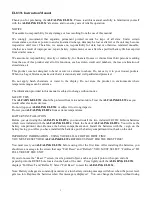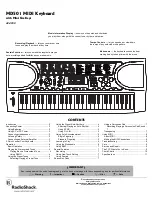
15
Look at any Chinese character and divide it into head and body. The head is the part of the character which can
be distinguished by one of the 24 Chinese alphabets or derived alphabets that located on the top , top left or outer
most of the character. The rest of the character is the body. Each part is coded according to its distinguishable
Chinese alphabet(s). The head can be maximum divided into 2 Chinese alphabets while the body into 3 Chinese
alphabets. For Chinese characters that cannot be divided into head and body, for example
“東”
, code the
whole character instead of dividing it. Each Chinese character has minimum one Chinese alphabet, that is one
alphabet is enough for its code. The maximum length of a code is five alphabets.
After a code is input, press SPACE to show the Chinese character.
For example:
“出”→
(divide into)
→
出
→
(code by category 4)
→
山山
→
(the alphabet)
→
UU
“理”
→
(divide into)
→
王、里
→
(code by category 23)
→
一土、田土
→
(the alphabet)
→
MGWG
“菇”
→
(divide into)
→
艹、女、古
→
(code by category 212)
→
廿、女、十口
→
(the alphabet)
→
TVJR
“語”
→
(divide into)
→
言、五、口
→
(code by category 221)
→
卜口、一一、口
→
(the alphabet)
→
YRMMR
Chinese alphabets Table:
PinYin input method
In the input interface, press “SPACE
”
key (Input method) to choose PinYin. Press “SPACE” button until the
upper right of the screen shows ”PY
拼
”. Type “ni”, the screen will show different characters in the same
pronunciation of “ni”, “1
妮
2
霓
3
倪
4
泥
” for your selection. Press “>” key to see more alternative characters
when “>” is shown at the right end of the selections. Use the number key (1~4) to select, and the word will be
input. Continue to input the English alphabets for other Chinese characters. Press <OK> key to finish Chinese
character input and to find out the interpretation of input words.
CKC Chinese Input Method
CKC Character Encoding Rule
















































